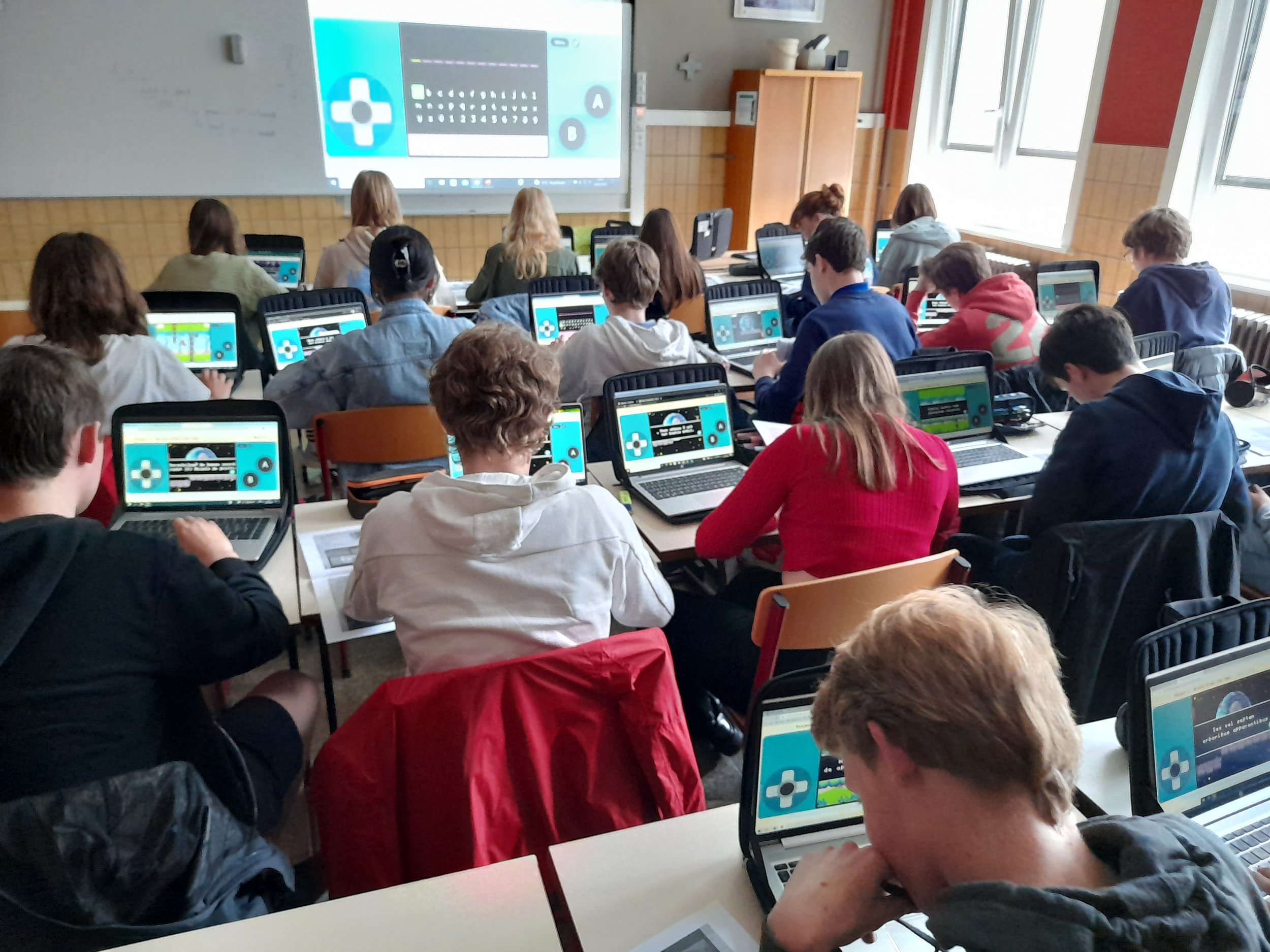Latijn and Game Design - Project Nicolai Klimii
Latin and programming, they seem apparent opposites that you would not immediately use in the same context. This game project, which is a collaboration between the Educational Master UGent and Sint-Lievens College, proves otherwise. By designing a game in which students with their knowledge of Latin try to complete some levels, we hope to bring these two worlds closer together!
Post-classical Latin in a modern jacket
The background to the game is the 18th century story by Ludvig Holberg, Nicolai Klimii iter subterraneum. By using this text, we especially want to introduce students to post-classical texts in Latin. Moreover, we hope to jump on the bandwagon of the current modernisation of the subject. The story contains imaginative encounters of Nicola with crazy creatures, which also enhances the visual aspect of the game.
Get started
For this project, the teaching material was packaged in a special DVD box. This way it seems as if the student is holding a real game in his hands. Inside the box is the booklet, again like a real game, with all kinds of tasks about the repetition of the single ablative. At the end of the game they must be able to: recognise a single ablative in a sentence, name the correct temporal relationship, translate this single ablative correctly and solve content-related comprehension questions about the text.
In addition to the game, an introductory lesson was made to put the text and author in context. This lesson also focuses on the literary tradition Ludvig Holberg draws on for his science fiction novel.
There are, of course, many other possibilities to work with this text. Teachers could, for example, link it to a reading lesson by reading a piece of Latin text, the content of which the pupils have already been introduced to in the game. This can be followed by a cultural reflection on the story, possibly by letting the pupils get creative with Holberg's work.
Requirements
Accessibility is an important element in this project. Therefore, the game was developed in an environment that all pupils can use and explore! This way, they can immerse themselves in Nicola's adventure in the Underworld, but also work on developing their own story.
To get started with this project you need:
a computer or a smartphone
Internet connection
the booklet with exercises for the pupils
the booklet with the detailed explanation for the teacher
For this project you do not need any special program or installation. You can play the game by surfing to nicolaiklimii.be or by using the QR code on the DVD cover! You can also test the game below. Attention: you also need the booklet with the exercises.
How did we develop this project?
This project is the result of a collaboration between UGent and Sint-Lievenscollege Ghent. This in the context of the course 'Subject Didactics B' within the Educational Master. In this course the students, Sofie Baeckelandt and Laura Naeye, have to develop digital learning material for Latin within a game environment. They were coached by lecturers Katrien Vanacker and Katja De Herdt (UGent - subject matter) and Robbe Wulgaert (supervisor - development of digital material).
Sofie and Laura explored the possibilities of a digital tool, chose relevant curriculum and lesson objectives, developed lesson materials and evaluation methods ... This way, students learn to develop (digital) lesson materials themselves, from start to finish.
What will I learn?
Goals:
Be able to situate Ludvig Holberg and his work Nicolai klimi iter subterraneum in the socio-cultural context;
Explain the contents in their own words;
Place this novel in the literary tradition;
Indicate the loose ablative in a sentence;
Naming the correct temporal relationship expressed by the blanks;
Translate the loose ablative correctly in the sentence;
Answer comprehension questions about a post-classical text after independent reading;
Curriculum objectives
The curriculum objectives were selected from the curriculum Latin, 2nd grade, Catholic Education Flanders.
LPD 8: Students will show how nouns, pronouns, participles and personal forms congrue.
LPD 10: Students will distinguish parts of sentences, determine their form, identify their function and role in the saying, and give the meaning. (specifically: loose ablative)
LPD 19: Students should monitor their reading and make adjustments as needed.
Pupils should show that they understand the text.
LPD 22: Students will be able to situate texts in the author's oeuvre and as types of texts.
LPD 30: The pupils will situate author(s) and work(s) within the socio-cultural context in which the text originated and include this in their interpretation.
I want this in my class! What do I have to do?
Do you want to work with this in your classroom? Well, that's great! I am happy to help you with that. Below you will find information about workshops, refresher courses and the tool to send me a message. I will usually respond to your question within 48 hours.






